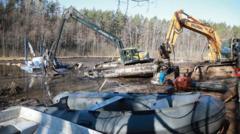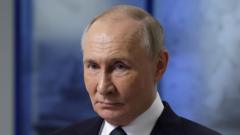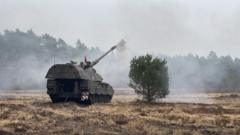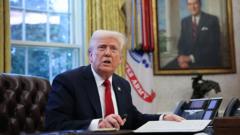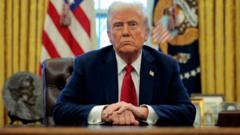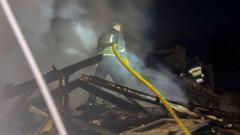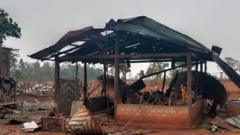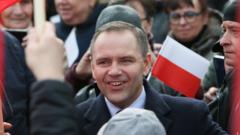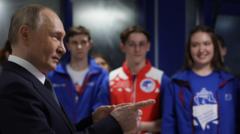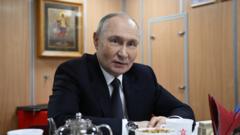A New York Times investigation exposes America's secret military involvement in Ukraine, detailing how U.S. intelligence and strategy significantly contributed to Ukraine's defense efforts against Russia, beyond the publicized financial support.
America's Covert Role in the Ukraine Conflict Unveiled

America's Covert Role in the Ukraine Conflict Unveiled
An in-depth investigation reveals the extent of U.S. military partnership with Ukraine during the ongoing war against Russia.
The war in Ukraine is at a crucial juncture, with President Trump advocating for diplomacy with Russian President Vladimir Putin's regime while aiming to halt hostilities. However, a recent investigation by The New York Times has uncovered that the United States' involvement in Ukraine was much more extensive than publicly acknowledged, prior to Trump's return to office.
For nearly three years, the U.S. and Ukraine shared an unprecedented partnership characterized by intelligence sharing, strategy formulation, and technological support that only a select group of American and allied officials were privy to. Although the Pentagon has disclosed details surrounding the $66.5 billion in arms provided to Ukraine, the investigation reveals that America's role included not only financial aid but also strategic guidance in the field.
Five key insights emerged from the report. A U.S. base located in Wiesbaden, Germany was instrumental in supplying Ukrainians with critical coordinates for Russian military positions. The partnership aimed to offset Russia’s numerical and technological superiority in warfare. To facilitate this, a specialized operation, Task Force Dragon, was established, allowing for seamless communication between U.S. and Ukrainian forces.
At the heart of this collaboration was the U.S. Army garrison in Wiesbaden, where daily meetings between American and Ukrainian military leaders focused on striking Russian units, equipment, or infrastructure. Intelligence partners analyzed various forms of surveillance, including satellite images and intercepted communications, to accurately plot Russian forces' locations.
Interestingly, military officials opted for a euphemistic usage of “points of interest” rather than “targets,” reflecting concerns about potential escalation on the battlefield. Through Task Force Dragon's strategic contributions, the deployment of Ukraine's increasingly sophisticated military resources received significant enhancements, underscoring the depth of the U.S.-Ukraine military relationship amid the ongoing conflict.

